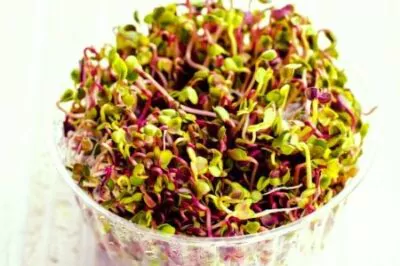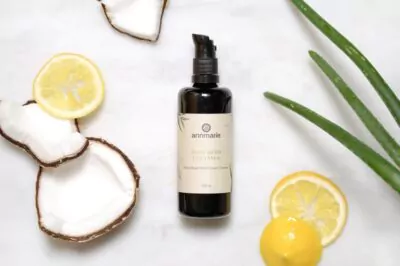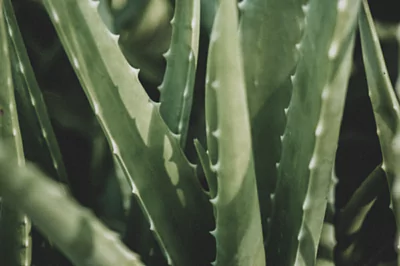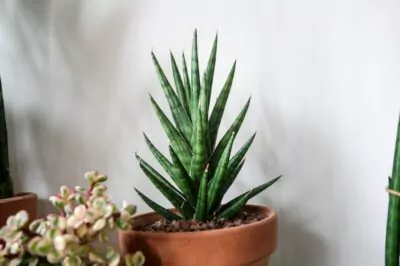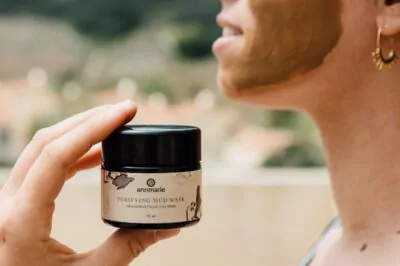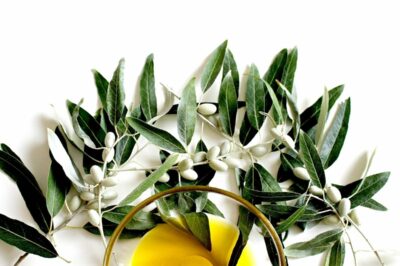Table of Contents[Hide][Show]
So there’s this superfood word that has become an unofficial status badge for healthy foods. Sometimes it’s used to refer to nutrient density, when a food has tons of vitamins and minerals per calorie. Other times, these foods offer compounds or effects found in few other foods. Often, they are exotic plants from the rainforest, but they could also be pond scum (we’re looking at you, spirulina).
Maybe it’s the exotic nature of these foods that makes them seem so super. But does an acai berry by any other name taste as sweet?
Think about the journey your superfoods take to get to your grocery store, and eventually to your pantry. They can travel long distances, meaning food miles are high, and nutritional quality might suffer from the time in transit. Additionally, freezing, drying, or otherwise preserving these foods is sometimes necessary and also degrades nutritional quality. Of course, once that maca acai goji berry smoothie reaches your lips, it all feels worth it.
We love superfoods and the healthy boost they bring to our diets. Depending on where you live, you might be able to pick acai berries and eat them fresh or dig up maca roots and enjoy them that day. For those of us in the United States, however, these delights are not available to us in that way.
If you’re looking to add some superfoods to your diet, but want to skip the food miles associated with some of them, here’s a list of five that might be growing at a farm near you.
1—Aloe
The U.S. currently supplies 60-65% of aloe sold in bulk, followed by Latin America with 20-25%. If you live in one of these areas, you have easy access to aloe that hasn’t traveled thousands of miles. This plant is hardy, surviving for long periods of time without water, which is another reason it represents a sustainable superfood. If you live someplace where there is no chance of freezing, you may find success at growing it yourself!
Aloe has a long history of medicinal use throughout many cultures, and recent research has validated many of its reported health claims.
For one, aloe vera has been shown to normalize blood glucose levels and help regulate hyperglycemia. This succulent has also been shown to improve the body’s absorption of vitamin E and vitamin C. Given that our diminishing soil quality is now affecting the nutrient content of our produce, plants that increase our absorption of these harder-to-come-by health-giving compounds really do earn the title “superfood.”
Aloe vera contains 75 active compounds. Processing, however, can leave the final product lacking in potency. Growing your own aloe guarantees you a fresh source, and you can choose whether to include the outer leaf for laxative effects, or just scoop out the inner pulp. If you aren’t able to grow it, buy aloe products packaged in dark containers, which protect the contents from light-induced degradation.
2—Sweet Potatoes
So first things first—if you’re confused about the difference between yams and sweet potatoes, I’m sending you to Huffington Post for an explanation. Here’s a hint: it’s more complicated than whether the tuber is orange or not. To clarify, though, we’re talking about potatoes with orange flesh and a copper skin. This is where your vitamin A needs are going to be met, and then some.
Besides vitamin A, sweet potatoes are a good source of vitamin C and B6, and minerals such as potassium, copper, manganese, iron and calcium. Its nutritional density is what puts this spud on the sustainable superfood charts. Beyond its nutrients, the seven grams of fiber in every cup of sweet potato make it a filling food that helps you poop! Nothing better than that.
Sweet potatoes like warm weather, which is why you will find many farms growing them in North Carolina, Mississippi, and Louisiana. These eager beavers love to grow and don’t require lots of fertilizer or irrigation to do so. This makes them a relatively sustainable crop to produce. While they are notoriously greedy with space, some innovative gardeners have found ways to grow them without devoting their entire garden to the process. Blogger Gayla Trail even writes about some success she’s had growing them in a reusable grocery bag.
If superfoods intimidate you, sweet potatoes are a great way to make your daily diet more nutritious. If you normally eat potatoes, you can substitute sweet potatoes in pretty much any recipe (but if you do, and it’s gross, we’re not liable).
3—Avocados
Avocados are one of those foods that seems too deliciously buttery to be healthy. They have a long history of cultivation in Central America, and are still widely popular today. Grown mainly in California and Florida, both sides of the coast can enjoy avocados from fairly close by.
These green fruits have as much and often more potassium than bananas (per gram), along with healthy monounsaturated fat that is said to increase the absorption of other nutrients, especially fat-soluble lycopene and beta carotene, which are both great for your skin. Rest easy knowing that the extra charge for adding avocado to your sandwich is well worth it!
4—Spirulina
Maybe you thought cyanobacteria were organisms that didn’t belong on your plate, but once you read about the unique health benefits they provide, you might change your perspective. Spirulina, a type of cyanobacteria, is high in protein, iron, and vitamin B12 (though there is debate as to how complete and absorbable the B12 is), which can be low or missing completely in vegetarian or vegan diets. Vegans flock to this food because it is a complete source of protein. Overall, its high content of vitamins, minerals, and chlorophyll make it a healthy part of meat-eating diets as well.
Most of you probably already know that there are many ways to get calcium if you skip dairy, and spirulina is one of them. It actually has more calcium than milk! Given that raising cows is extremely resource-intensive—including land for them to live on, land to grow food to feed them, and copious amounts of water—using spirulina as a dairy-free calcium source is a very sustainable option.
In 1981, Earthrise Nutritionals began commercially growing and harvesting spirulina in Imperial, California. One-hundred-eight acres later, they were, for a time, the world’s largest producer. Now, China produces more of this superfood, but farms around the world also play the algae game, including sizeable farms in Hawaii, China, India, Israel, Chad, Myanmar, and Mexico.
Earthrise Nurtitionals founder Robert Henrikson is now working to promote small-scale microalgae systems you could have at your home! His company Smart Microfarms sells and offers long-term support for systems you can set up on your roof, porch, or in your backyard. Varying sizes offer people options for household use or even commercial growing.
You might not be jumping out of your seat at the prospect of growing algae at your house, but regardless, spirulina can be a sustainably super part of your diet. These highly productive farms are found around the world—thus, it’s more than likely you can get your hands on a close-by source.
5—Sprouts
It’s helpful to have scientific research to back up health claims, and the research to support sprouts as a healthy, dare I say, superfood, is there. Research aside, it intuitively makes sense: you take a seed, such as alfalfa or garbanzo or onion, which is already full of nutrition to begin with, and then you make it come alive. That’s bound to be exceptionally healthy. It’s more than a seed, not quite a full grown plant… a magical thing in between!
When you eat a sprout, you are eating a plant that is currently growing, i.e., alive! During this delicate stage in a plant’s life, it is at its peak of nutritional quality, containing an exceptional amount of enzymes and nutrients. Enzymes are proteins that your body uses to catalyze reactions. Cooked foods, because proteins denature at high heat, are far lower in these vital compounds.
After only a few days of sprouting, the vitamin content of the plant increases dramatically—by up to 20 times! As soon as a fruit or vegetable is plucked from its roots, it starts to diminish in nutritional quality. The produce you normally buy has probably spent ample time off the vine during transportation and then probably sat for days to weeks on the grocery store shelves. With sprouts, on the other hand, the plant is at the beginning stage of life and is still growing. That’s fresh.
Not to mention that you can grow sprouts in your kitchen. It’s easy! Easy enough that your history of killing every plant you’ve ever touched will not count against you here. We like Kris Carr’s guide to growing sprouts, which also contains some info on why they’re so good for you (in case we didn’t already convince you).
The plethora of options for what to sprout leaves even more room for eating local. Find some sproutable seeds from your area and get those enzymes flowing!
Your health is important, as is the health of the planet! Buying some exotic superfoods while also making an effort to invest in many healthy and local foods is a good way to strike a balance.
Sources:
http://usda.mannlib.cornell.edu/
http://www.sare.org/Learning-Center/From-the-Field/Southern-SARE-From-the-Field/The-Lucrative-Sweet-Potato-Takes-Root
http://www.agmrc.org/commodities__products/fruits/avocado-profile/
http://www.smartmicrofarms.com/about/systems-services/
http://www.spirulinasource.com/spirulina/spirulina-farms/smart-microfarms/
http://www.nrel.gov/biomass/pdfs/benamotz.pdf
http://wellnessmama.com/4738/spirulina-herb-profile/
